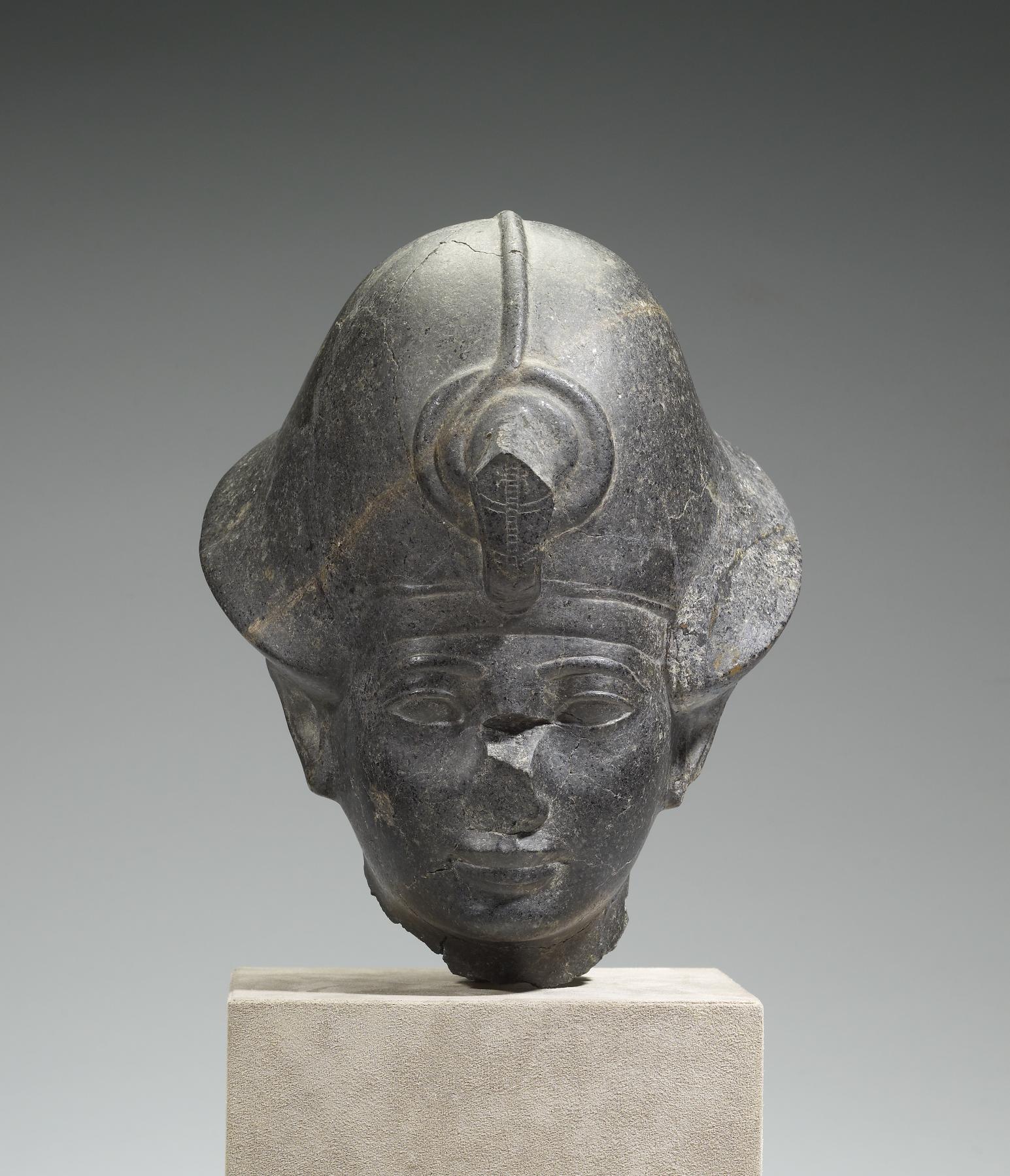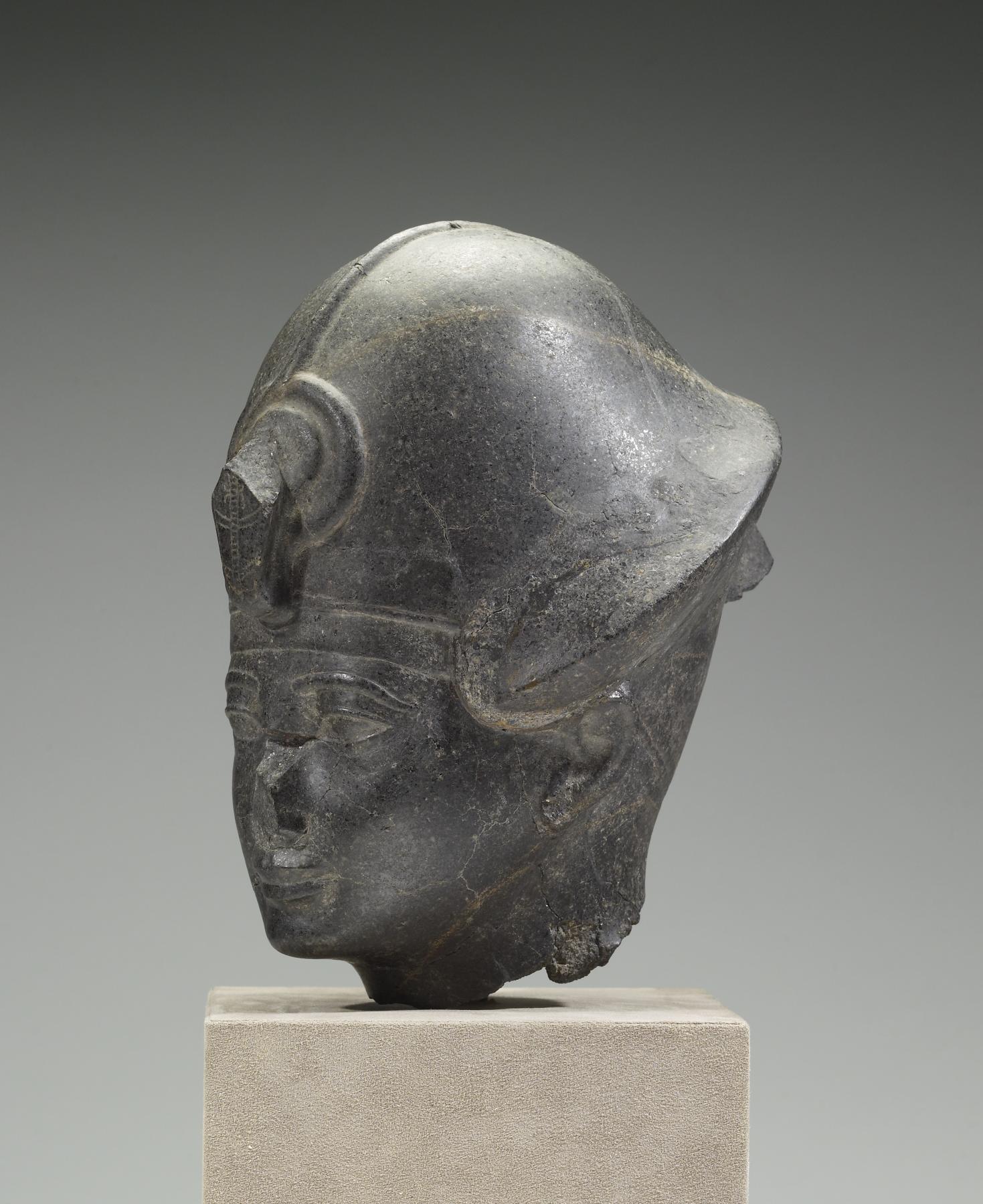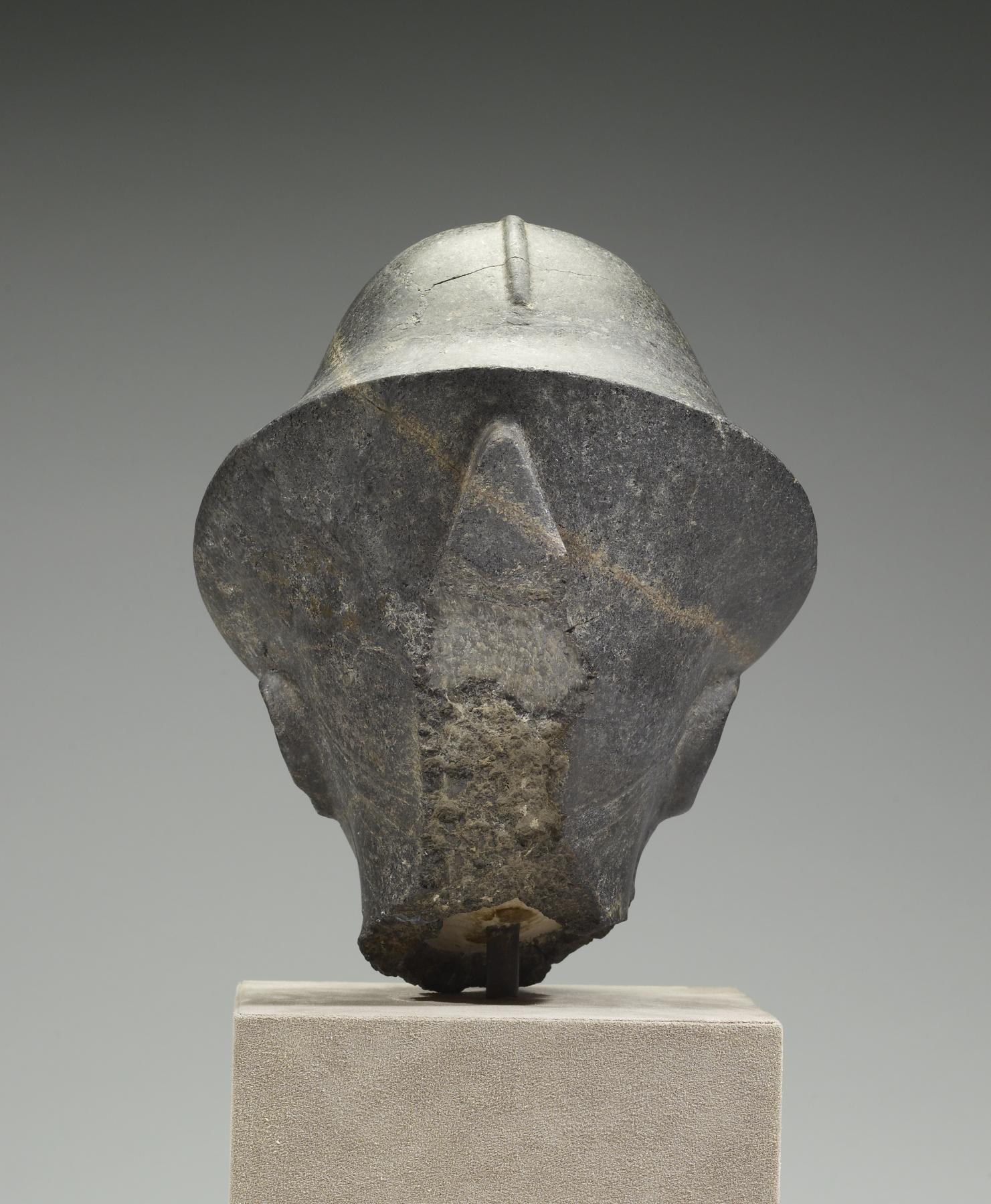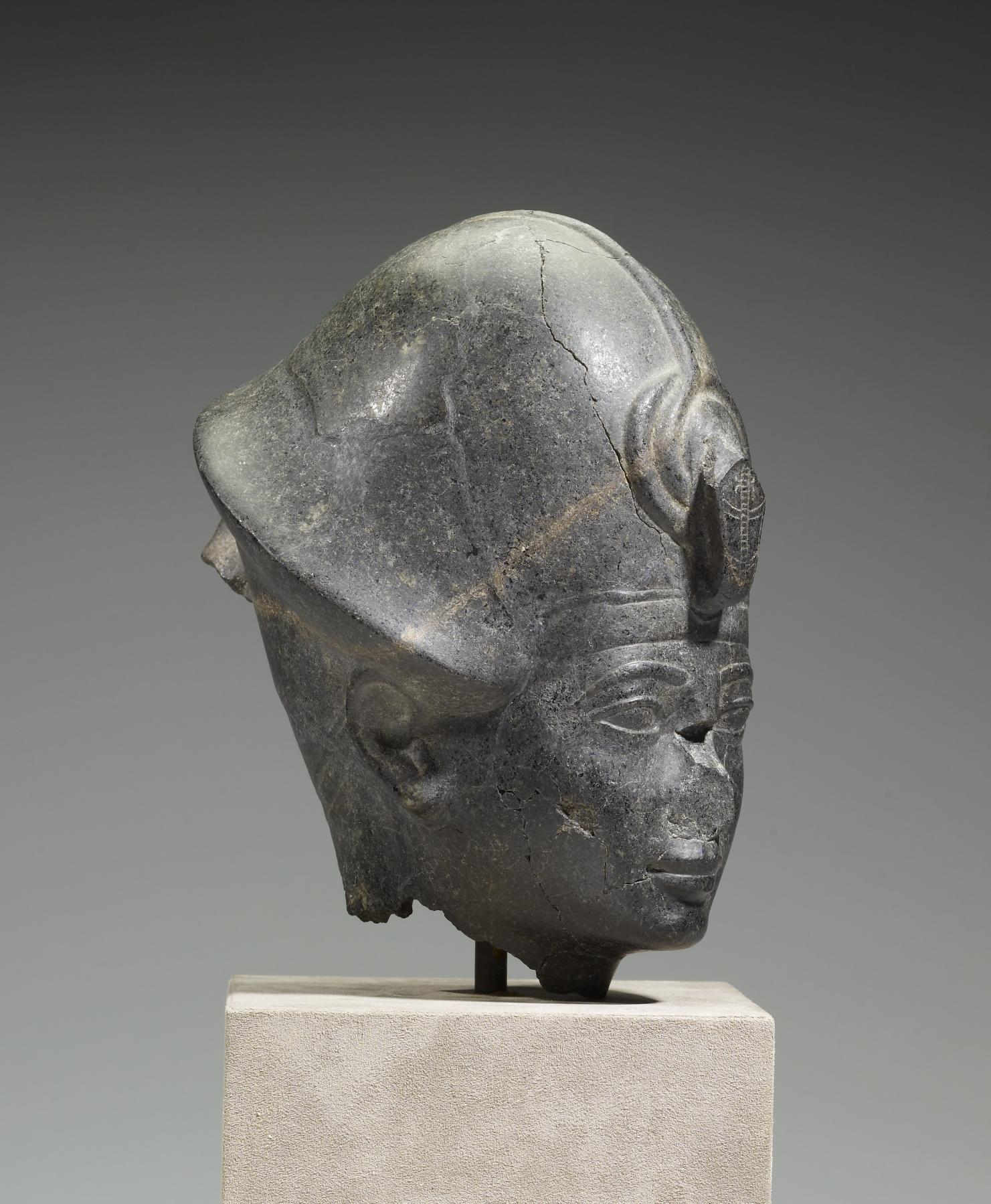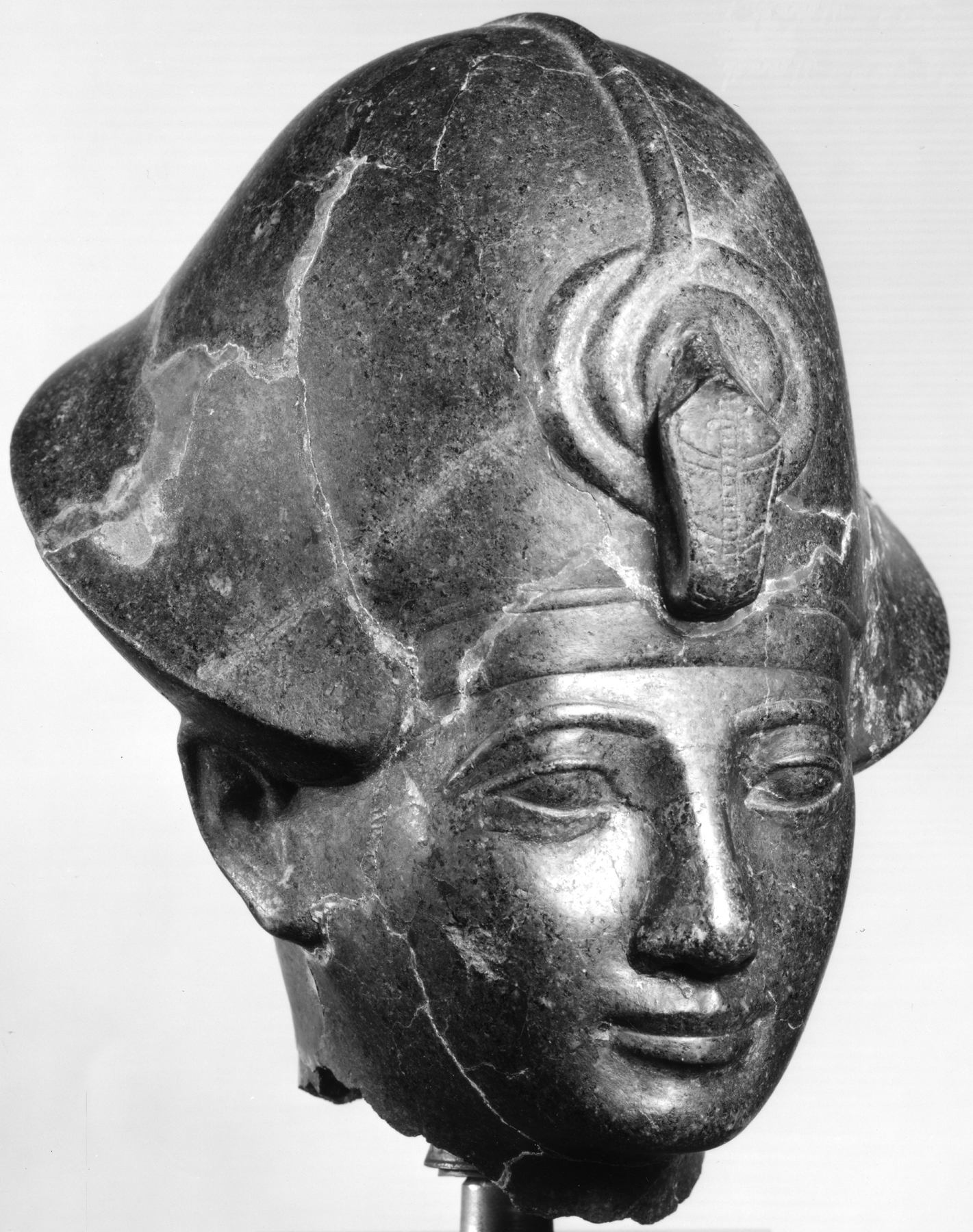Head of King Amenhotep II with the "Blue Crown"
(Ancient Egypt and Nubia )
The khepresh, or "blue crown," appears frequently in royal sculpture of the New Kingdom. The king wore this crown on campaigns or in ceremonial processions. As with all royal headdresses, the coiled, protective uraeus serpent appears at the brow.
Provenance
Provenance (from the French provenir, 'to come from/forth') is the chronology of the ownership, custody, or location of a historical object. Learn more about provenance at the Walters.
Dikran Kelekian, New York and Paris; Henry Walters, Baltimore, 1913, by purchase; Walters Art Museum, 1931, by bequest.
Exhibitions
| 1962 | The Arts of Man. Dallas Museum of Art, Dallas. |
Conservation
| Date | Description | Narrative |
|---|---|---|
| 12/20/1939 | Treatment | repaired; loss compensation; coated |
| 5/24/1962 | Treatment | cleaned; loss compensation |
| 9/27/1965 | Treatment | examined for loan |
| 12/12/1994 | Loan Consideration | examined for loan |
| 12/13/1994 | Examination | examined for loan |
| 3/17/1997 | Examination | survey |
| 9/14/1998 | Treatment | technical study; cleaned; repaired; loss compensation |
Geographies
Egypt (Place of Origin)
Measurements
11 7/16 x 8 1/4 x 9 1/4 in. (29 x 21 x 23.5 cm);
mount: 5 7/8 x 5 5/8 x 5 5/8 in. (15 x 14.3 x 14.3 cm)
Credit Line
Acquired by Henry Walters, 1913
Location in Museum
Accession Number
In libraries, galleries, museums, and archives, an accession number is a unique identifier assigned to each object in the collection.
In libraries, galleries, museums, and archives, an accession number is a unique identifier assigned to each object in the collection.
22.229

